Choosing the right email marketing and customer data platform is crucial for entrepreneurs looking to grow their business online. Klaviyo and Twilio Segment are two industry-leading options, but determining which best fits your needs can be challenging.
This comprehensive Klaviyo vs Twilio Segment comparison analyzes key factors across these platforms—from market position and ease of use to features, customer support, and pricing.
Understanding strengths and limitations around design customization, built-in functionality for blogging, e-commerce, and SEO optimization will empower you to match robust tools to your goals so you can choose the email marketing tool that will best propel your business growth and deliver a return on investment.
1. Understanding the Basics
Klaviyo was founded in 2012 by Andrew Bialecki and Ed Hallen to help small e-commerce sites big and small focus on owned, earned, and paid marketing by consolidating their third-party tools into one intuitive platform.
Since then, Klaviyo has raised $145M in venture funding and serves over 100,000 businesses, including role-model brands like Chubbies, Oatly, and Tushy. They have earned a market-leading position with a niche focus.
Twilio Segment started two years later, founded in 2014 by Peter Reinhardt, Ian Storm Taylor, and Calvin French-Owen. Twilio offers a wider range of tools and services for customer engagement beyond email and owned channels—starting as a data pipeline solution before expanding into more marketing and analytics capabilities.
Segment raised $283M in funding before being acquired by cloud giant Twilio in 2020 for $3.2 billion. The Twilio brand boasts an expansive 150,000 customer base.
2. Features and Functionality
Automation
Klaviyo
Klaviyo offers a robust automation builder that empowers users to create customized workflows triggered by time delays, specific customer actions, schedules, and more. You can build multi-step automation that segments contacts, updates customer profiles, and deploys targeted email campaigns or SMS messages.
For example, you can automatically enroll buyers into post-purchase sequences, re-engage dormant subscribers with reactivation campaigns, or set up abandon cart flows to tempt users back. Klaviyo makes it simple to visualize workflows with a drag-and-drop workflow designer. Their automation templates accelerate campaign creation so you can drive engagement faster.
With custom fields and variables, Klaviyo ensures in-depth personalization powered by up-to-date customer data. Location variables, for one, unlock geography-based automation, while dynamic segments let you cater to user behaviors. This flexibility results in relevant communication.
Twilio Segment
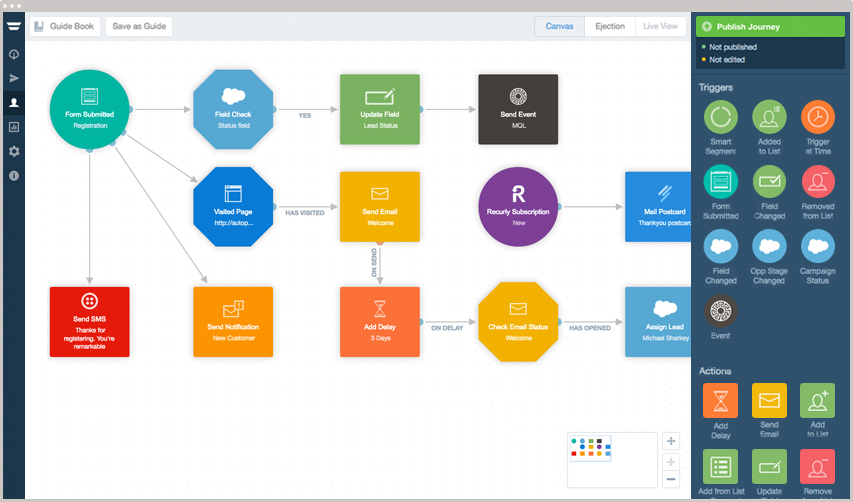
Twilio Segment provides the data foundation to fuel customer automation across your chosen software stack. Their workflow builder is not as robust as Klaviyo’s for owned channel activation but does offer prebuilt workflows to leverage Segment data in 300+ business tools.
So while you cannot create complex automation natively in Segment, their seamless connections unlock that capability by centralizing data flows.
For example, Segment could automate sending order data to a financial platform whenever a sale occurs. Or you can create custom audiences in a marketing platform like Braze when high-scoring leads convert. Workflows help manage and maximize existing tech instead of building standalone automation.
Winner: Klaviyo
When it comes to purpose-built automation for email and owned channels, Klaviyo offers more advanced, customizable functionality. Their specialization gives them the edge for users focused squarely on leveling up these capabilities versus a wider internal toolset.
For broader insights enablement, Segment is an unmatched router. But Klaviyo conquers when automation matters most. Their template library, triggers, and predictive modeling accelerate activation.
Email Templates
Klaviyo
Klaviyo offers hundreds of professionally designed, customizable email templates to choose from. Their template gallery makes it easy to browse options for cart abandons, browse abandons, weekly digest, welcome series, sales and promotions, winbacks, and more.
Templates are optimized for mobile and thoroughly tested to ensure excellent deliverability. You also get access to A/B testing right within Klaviyo to experiment and refine your emails. Their drag-and-drop builder and global styling controls simplify customizing templates to match your brand. Dynamic content, images, videos, custom fields, and other elements can be added with ease.
Klaviyo also provides recommendation templates powered by machine learning to individualize product suggestions for each subscriber based on signals like purchase history, browsing behavior, and predictive modeling.
Twilio Segment

Twilio Segment does not provide native email templates or email creation capabilities. As a customer data platform focused on data routing and analytics, they facilitate connections to third-party email and marketing platforms where email templates would be managed.
For example, once you pipe your data into an email provider integrated with Segment like Mailchimp, SendGrid, Customer.io, etc., you can leverage templating abilities within those tools. But the template functionality lies with the channels themselves versus Segment directly. Think of them more as the conduit enabling template personalization with quality data.
Winner: Klaviyo
When it comes to built-in email templates and email creation, Klaviyo is the undisputed winner. With hundreds of professionally designed options covering all core business campaigns and use cases, they remove the need for any secondary platform purchase purely for email.
Their focus provides a purpose-built template gallery unmatched in breadth and optimization. Twilio Segment users must connect to external tools for similar functionality by the nature of their offering. So for immediacy and range of email templates afforded natively, Klaviyo prevails.
Segmentation
Klaviyo
Klaviyo empowers deep customer segmentation with dynamic lists that automatically update based on criteria you define—from customer properties like email domain or business tier to behavioral events like campaign engagement, abandoned cart status, recent order history, and more.
They offer standard and custom properties to tag contacts for more precise grouping. You can combine properties with logical filters (AND, OR, NOT) to target or exclude contacts from segments for accuracy. These dynamic lists auto-enroll users when they meet rules for better personalization.
Klaviyo also recommends high-performing segments fueled by predictive analytics. Their algorithm surfaces lookalike audiences modeled after your best customers that you can easily export or engage with tailored messaging.
Twilio Segment
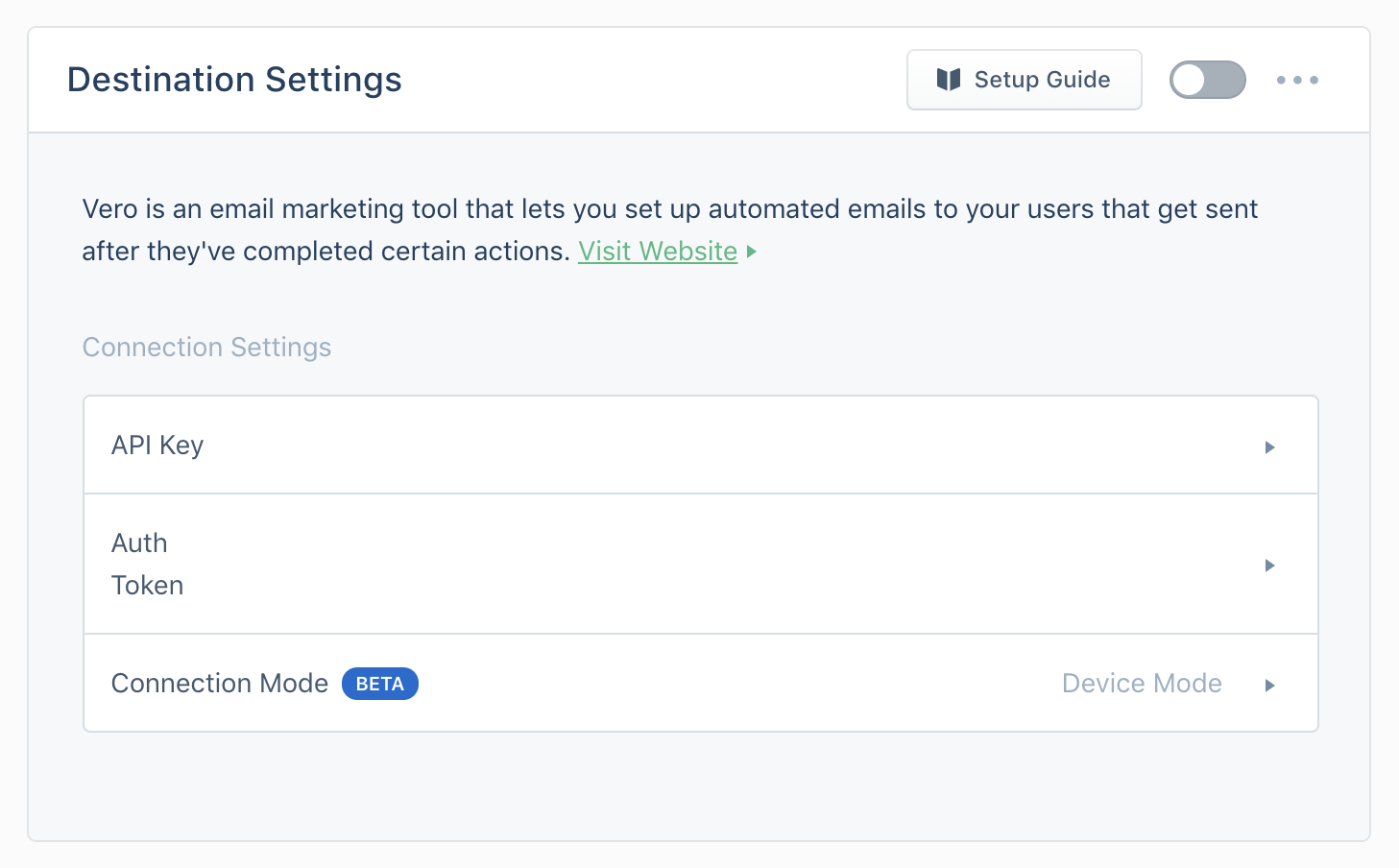
Twilio Segment specializes in creating a universal customer profile by consolidating all data sources into one truthful record digestible across any app. So segmentation relies on piping this enriched data into your desired tools. Powerful integrations translate to powerful segmentation.
For example, once Segment ingests web analytics, CRM, mobile, and more data streams, you can access consolidated profiles within email and marketing platforms like Mailchink. Dynamic lists would be configured there based on Segment data shared seamlessly into those destinations.
So while Segment doesn’t own native segmentation, they provide the foundation for accurate targeting anywhere through reliable data collection solving for a universal customer view.
Winner: Tie
When it comes to pure segmentation within one platform, Klaviyo rules with automated, customizable grouping and intelligent lookalike modeling. But Twilio Segment’s core offering is centralizing accurate data for such segmentation. So they each excel at what they specialize in—owned-channel activation or customer data infrastructure.
Evaluating those niche focuses results in a tied score. For standalone access or to enrich external capabilities, both prove capable segmentation engines in their own right.
Analytics
Klaviyo
Klaviyo packs robust email and customer analytics accessible through interactive dashboards and customizable reporting. Email metrics cover opens, clicks, bounces, spam complaints, unsubscribes, and more—segmentable by campaign, template, sender, date range, and other filters for deeper analysis.
The platform tracks engagement by individual to uncover behavioral trends across people, allowing you to tag underperforming subscribers and adapt messaging. Klaviyo also sizes up metrics against your industry’s baseline averages for context.
Their analytics integrate web event tracking to connect online behaviors with email performance. You can view site analytics like traffic sources, top pages, and conversions and apply email metrics on top to optimize cross-channel strategies with clarity on what’s working best.
Twilio Segment
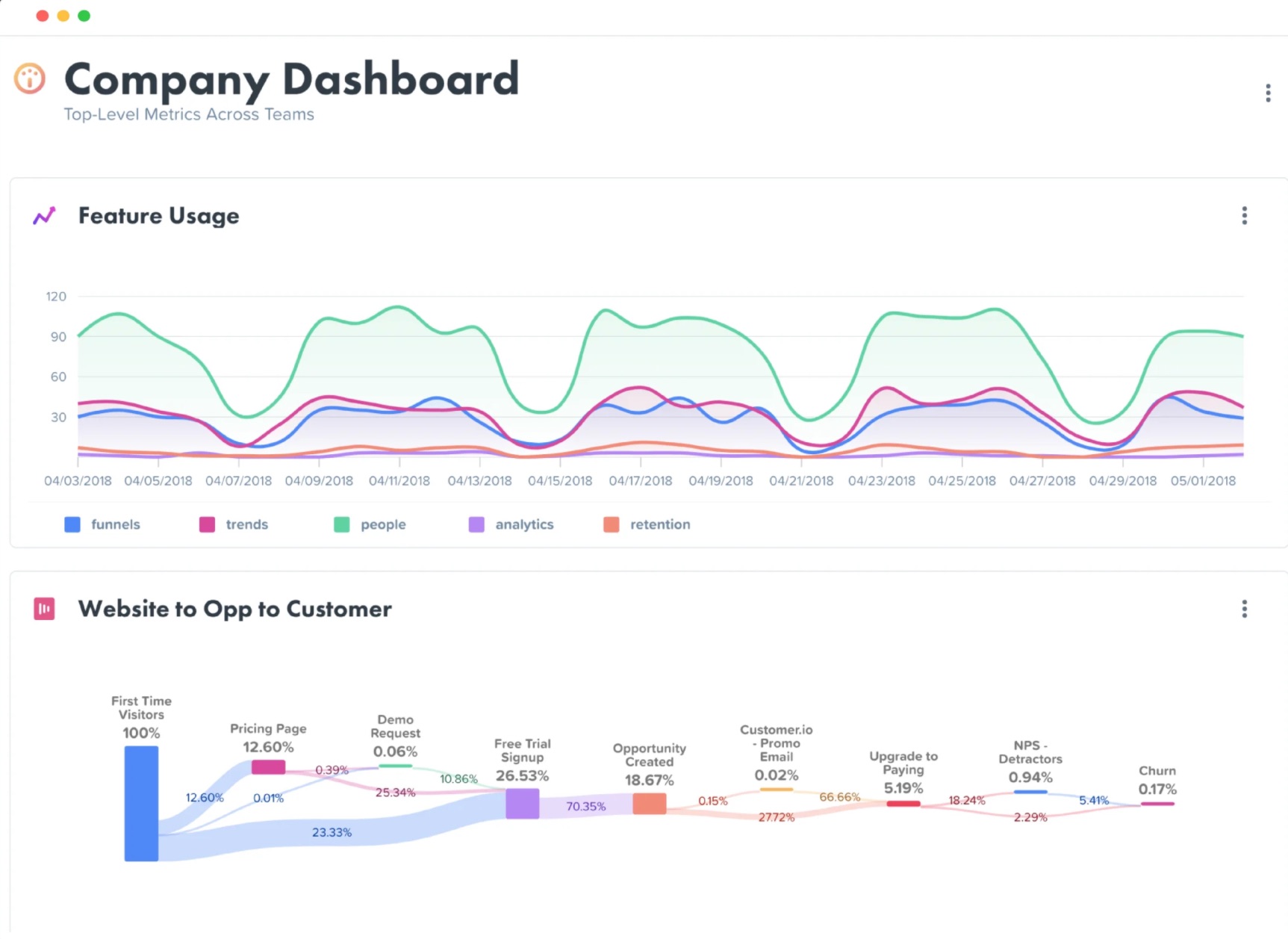
Analytics are at the core of Twilio Segment’s offering. Their foundation consolidates all customer data from any source into a digestible profile and segments audiences for analysis within 300+ integrated tools. So while Segment doesn’t provide its reporting, piping data into solutions like Google Analytics, Amplitude, Mixpanel, etc. enables custom reporting powered by Segment’s reliable data layer.
For example, you can build event funnels to measure how acquisition campaign exposure impacts conversion over time across platforms so you can boost conversion rates for your company. This full lifecycle visibility paired with unified data builds the framework for accurate analysis once routed across your tech stack.
Winner: Tie
When it comes to purpose-built analytics within each platform, Klaviyo leads for email and web event health tracking with contextual performance benchmarking. However, the Twilio Segment platform proves unmatched for fueling wider business analytics through integrated destinations by unlocking a complete view of customer data first.
So once again, through the lens of niche focuses, both platforms demonstrate analytics strength ideal for small and large companies alike, making this comparison a tie.
Unique Features
Klaviyo
A few unique benefits Klaviyo brings to the table include native SMS marketing and comprehensive China email delivery through a partnership with Mailgun. Their SMS tool removes the need for a secondary provider if you want to activate both email and text message campaigns in one platform.
Text message flows can also be triggered through email automation workflows for an integrated approach. Their reliable China email routing provides peace of mind to those needing to accommodate global outreach beyond standard domains.
Klaviyo also offers a free public certification called Email Expert through their Klaviyo-U training platform to help skill up in-house teams. Achieving credentials helps develop expertise beyond the software alone.
Twilio Segment
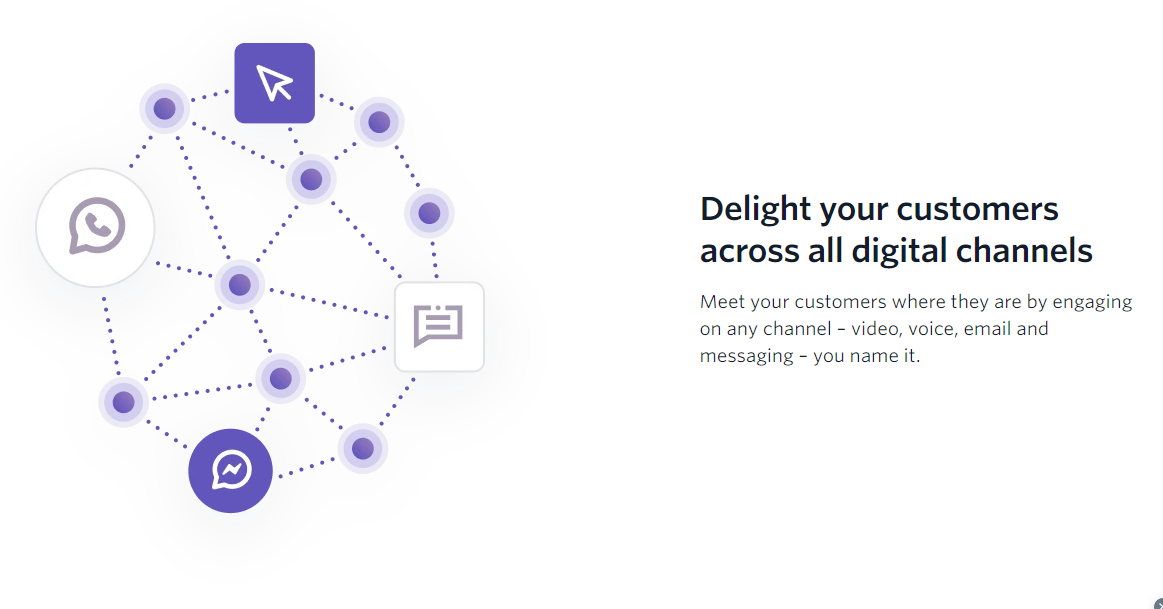
As the pipeline powering customer data to all your tools, Twilio Segment’s single biggest unique offering is its platform agnosticism. No other provider consolidates data from as many sources to then share across as many destinations. Removing siloed data stores unlocks unlimited use cases only limited by your imagination and tech stack.
This gives innovative teams the foundation to build complex systems blending multiple apps fueled by reliable data. Segment guarantees data delivery which removes headaches for real-time analysis and activations fed by a unified customer truth.
Winner: Twilio Segment
The clear winner for the most unique offering is Twilio Segment. Though Klaviyo certainly brings SMS and China email perks to the table as niche bonuses, no one comes close to Segment’s network of 300+ data connections.
Their infrastructure enables both analytics and activations powered by reliable data while dissolving barriers between technologies. With an equitable lens on specialized versus connected ecosystems, Segment undoubtedly provides the most unique solution.
3. Ease of Use
Klaviyo
Klaviyo prioritizes intuitive navigation and interactions to accelerate getting up and running. Their well-organized interface guides you through key workflows like email campaign building, automation creation, and trend analysis without overwhelming menus. Helpful tooltips educate users on advanced functions without obstructing the experience.
The UI stays responsive for mobile access while retaining robust building capabilities. Drag-and-drop customization streamlines creative configuration whether personalizing templates or designing automations. For further simplicity, their one-click import smoothly transfers existing email subscribers during onboarding.
Overall, Klaviyo achieves tremendous usability for crucial email marketing workflows while still supporting sophisticated needs through smart UI like customizable metrics dashboards. The experience strikes an ideal balance of approachability and extensibility.
Twilio Segment
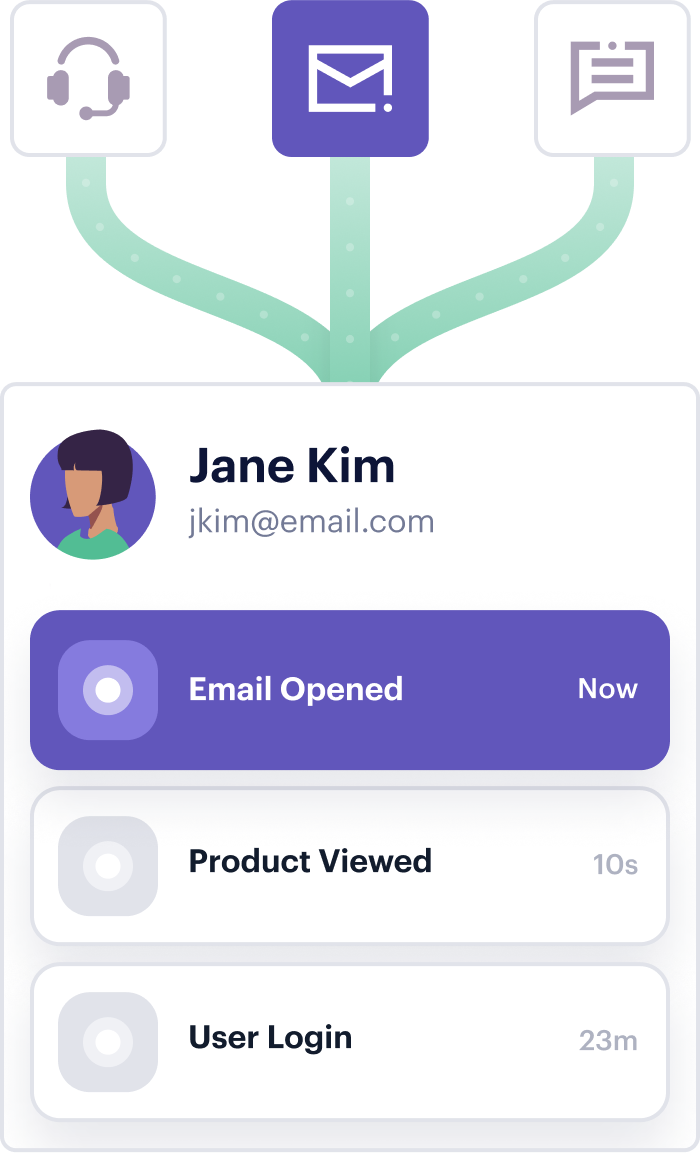
Twilio Segment pursues usability through flexibility, not constraint. As a platform focused on data routing versus activations, their interface provides high functionality to satisfy technical users. While not as intuitively guided as Klaviyo, Segment enables connections through an interactive catalog sorted by channel and category.
The setup experience stays versatile but expects users to be more technically proficient in fields like taxonomy configuration. Their focus centers on furnishing pipelines to empower external tools instead of competing as an all-in-one activation solution. So simplicity takes a backseat to wide-ranging capabilities present even in initial workflows.
Winner: Klaviyo
When comparing ease of use, Klaviyo stands out as the winner. Their purposeful design decisions to perfect owned-channel flows through an elegantly intuitive but powerful interface show mastery of the fundamentals. Segment undoubtedly unleashes potential through blendable connections, but demands more technical acumen. For rapidly empowering email marketers and customer engagement specialists needing an approachable launchpad optimized for activation, Klaviyo streamlines adoption better. They ease users in before exposing advanced functionality.
4. Email Deliverability
Klaviyo
Klaviyo’s primary focus on owned email and SMS marketing provides specialized tools to maximize inbox placement and engagement. Their automated exports and onboarding assistance qualify your existing lists to ensure more of your messages will be delivered. Proactive alerts flag bad addresses to maintain hygiene. Real-time feedback shows spam test scores to optimize future deliverability.
Klaviyo also offers a free Pre-Send Validation feature which previews your message’s render across email clients and mobile devices to identify division or display issues before broadcasting to your full list.
This drives deliverability by avoiding formatting pitfalls upfront. Their global infrastructure and partnerships like with Mailgun for reliable China routing provide optimized, territory-based email delivery tailored for target users.
Twilio Segment
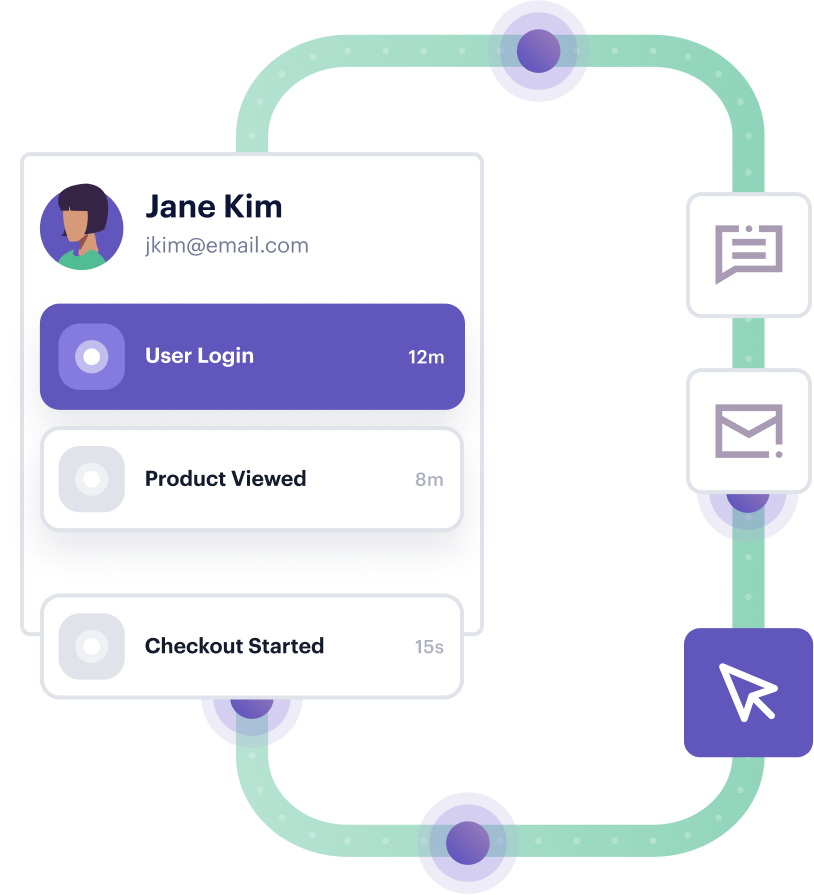
As a middleware routing your data to other tools, Twilio Segment does not directly host or facilitate email delivery. However, their meticulous pipeline preparation enhances critical context for platforms receiving Segment data to better personalize outreach and provide orchestration.
For example, Segment might feed a linked CRM your historical support ticket data paired with current web browsing behavior. When this unified customer record transfers to your email provider, the added background helps segment subscribers and craft targeted content that resonates – leading to improved and open rates which signal relevancy to mail providers.
So Segment elevates email deliverability indirectly by permeating messaging platforms with richer data.
Winner: Klaviyo
When focused strictly on maximizing email deliverability and inbox placement rates within one specialized platform, Klaviyo has superior capabilities. From automated list cleansing to pre-send previews across devices and geographic-based routing infrastructure, they offer an expansive optimization toolkit uniquely dedicated to owned email.
While Segment certainly enables smarter subscriber coordination, Klaviyo directly oversees and perfects delivery with precision tools. So for the most robust email assurance, Klaviyo wins for now – but as Segment expands, they may challenge status quo technology in this area similar to their revolutionary data layer.
5. Customer Support and Community
Klaviyo
Klaviyo prioritizes customer support through multiple tiers depending on your pricing plan. All users can access email support, texting, as well as community forums and an extensive knowledge base of articles, webinars, and Klaviyo-U courses for self-guided help.
As you scale into premium plans, options expand to include live chat support, dedicated account management, and priority case handling to keep businesses growing without barriers. Users praise Klaviyo’s highly responsive, personalized care through channels of choice.
Alongside formal support, Klaviyo cultivates a community forum for discussing best practices with 57K+ members. They also host the Klaviyo-U Community with specialized cohorts focusing on holiday readiness, SMS marketing, and more for group learning opportunities beyond the basics.
Twilio Segment
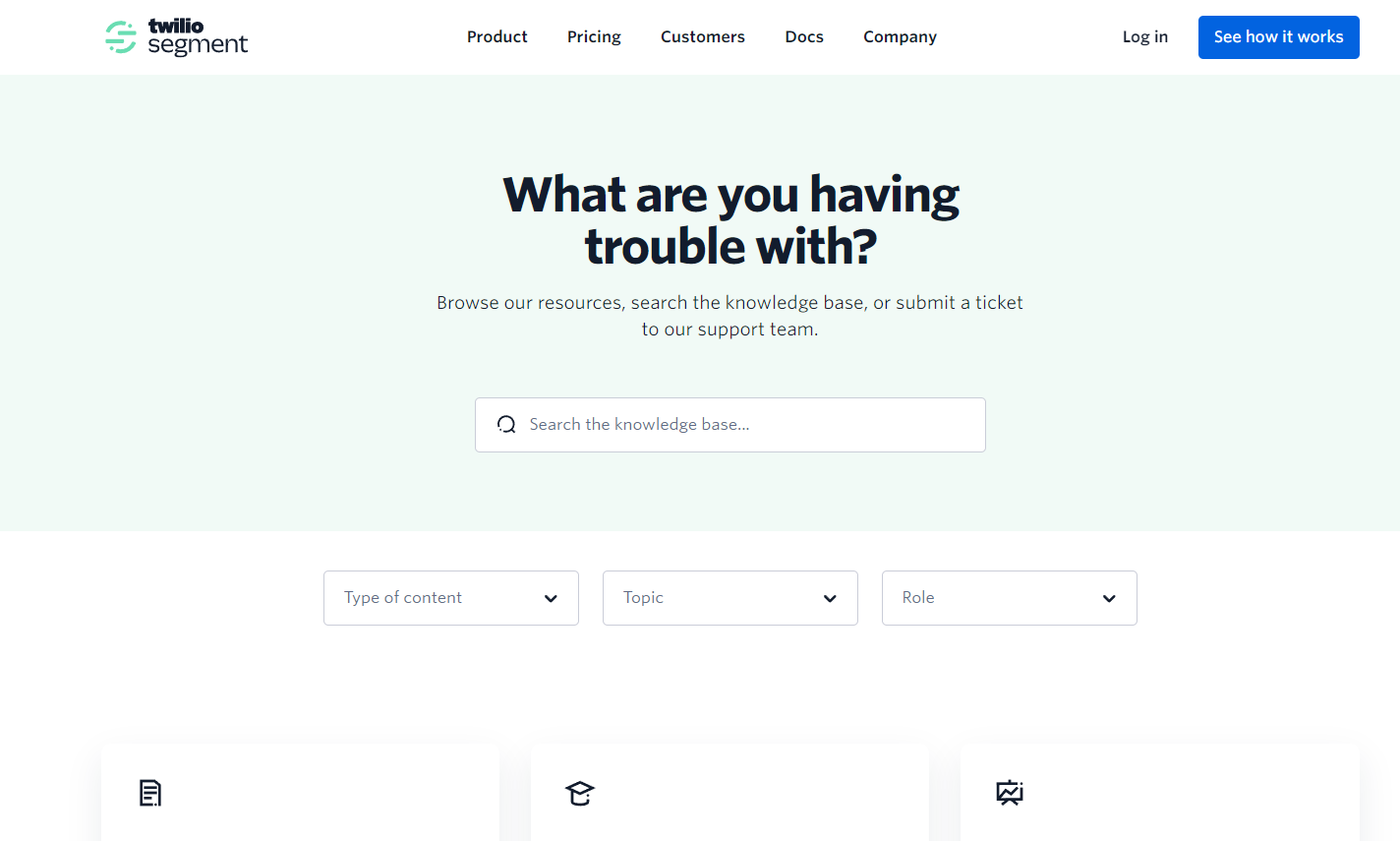
Twilio Segment offers business hour email and chat support to all pricing plans as well as ticketing access to document issues and feature requests. Users under Enterprise plans unlock 24/7 live support, a named customer success manager, and proactive account recommendations tailored to goals.
Segment’s Champions Community provides a forum for like-minded CMOs, engineers, analysts, and more to swap growth strategies and implementation learnings through local meetups or their online discussion boards. While still growing with 3K global members currently, the group provides a community beyond standard docs.
Winner: Klaviyo
Evaluating community vibrancy and tiered support models, Klaviyo edges out as the winner by a slim margin. Their specialized forums foster wide peer sharing supplemented by highly responsive support teams adept at both technical troubleshooting and strategic advising to push campaign performance based on extensive vertical expertise.
Segment equips a reliable foundation but is still expanding its community resources to nurture members more wholly across knowledge levels on structured growth tracks.
6. Integrations
Klaviyo
Klaviyo connects with 100+ platforms spanning CRMs, email, analytics, marketing, and sales including anchor tools like Shopify, WooCommerce, HubSpot, Magento, Salesforce commerce cloud, and Zapier.
With direct Shopify integration, Klaviyo pulls customer and order activity automatically to enrich profiles and trigger post-purchase automation like reviews or renewal reminders right from stored metadata. For email, pipes accelerate sends and list syncing across ESPs like Mailchimp and ActiveCampaign.
The email marketing automation platform’s open API also allows engineers to build custom apps on Klaviyo using webhooks to pass data. Integration speed wins through pre-built pipes while customization empowers external connections beyond the core catalog.
Twilio Segment
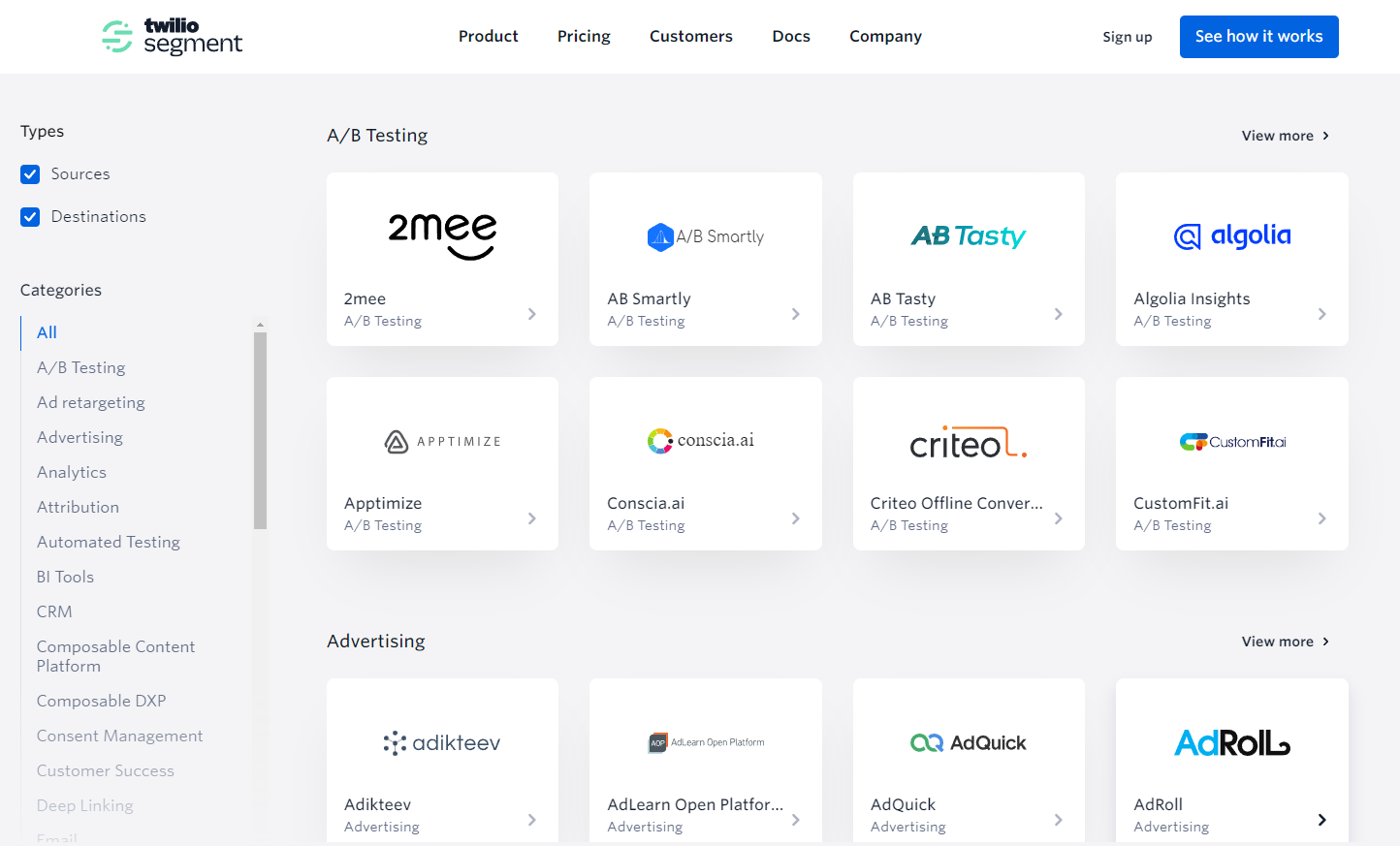
As the core customer data platform, Twilio Segment specializes in consolidating tools into a trusted data foundation through their 300+ strong integration marketplace. Channels span advertising, analytics, social, and most leading martech solutions.
With widespread adoption, Segment assures reliable data sharing into virtually all enterprise hubs, uniting once-siloed systems for stronger automation and personalization regardless of tech variations. Users praise their continuous integration updates and ability to request new pipes based on existing listener demand or unique needs.
Winner: Twilio Segment
The clear winner for deepest integrations is Twilio Segment, true to their infrastructure promise. While Klaviyo offers sufficient core channels, particularly in the owned-channel space, and certainly enables custom builds through their open API, none parallel Segment’s sheer connectivity reach or modern data layer influence.
They transform chaotic arrays into united understanding through smart standardization and delivery. When evaluating the ability to consolidate communications, Segment undoubtedly dominates integration capabilities today. They are the universal language between systems.
7. Pricing
Klaviyo
Klaviyo pricing is based on your monthly email volume, starting with the free plan which lets you send up to 500 monthly emails. The Email plan costs $45/month for up to 1,500 contacts and mobile push notifications. For $60/month, you get up to 15K monthly sends.
This transparent, usage-based model means you only pay for the required capacity. Add-ons like SMS credits cost extra.
Klaviyo is positioned as an enterprise-level tool focused on established mid-market businesses and e-commerce brands.
Twilio Segment

Twilio Segment offers three pricing plans also tiered by volume and customer support access:
- Free: $0 for 1,000 visitors/month
- Team: $120/month for 10K visitors/month
- Business: Custom pricing
Although the Segment measures monthly active user volume instead of contact totals, limits allow tremendous throughput even under mid-market tiers. Support scales from email only to live 24/7 with Enterprise packages.
Winner: Tie
When it comes to value for money, it’s a tie. The pricing table transparency and growth-accommodating tiers of Klaviyo and Twilio Segments prove evenly matched. Both support customers across the spectrum through cascading plans that keep crucial functionality available despite commercial needs.
They diverge only in proprietary volume calculations but relative allowances shake out fairly equal. With neither emerging as a runaway winner, this face-off results in an across-the-board tie.
8. Reviews and Reputation
Klaviyo
Verified reviewers on platforms like G2, Capterra, and Software Advice highlight Klaviyo’s simplicity and automation capabilities as major assets. They praise the intuitive interface, responsive support, and abundant educational resources like Klaviyo-U for ramping up execution.
Many note Klaviyo’s niche specialization on owned marketing channels as a key differentiator that allows them to outpace competitors in purpose-built email workflows versus attempting an incomplete all-in-one suite. Things like automation building, tracking cross-channel behavioral data, and custom metric dashboards earn repeated praise.
Common constructive feedback includes wanting an easier editor for basic HTML email design, more advanced predictive modeling insights relative to list size, and expanded CRM integrations. But most agree that Klaviyo’s focus fosters excellence in core email execution.
See Klaviyo’s reviews on G2, Capterra, and TrustRadius.
Twilio Segment
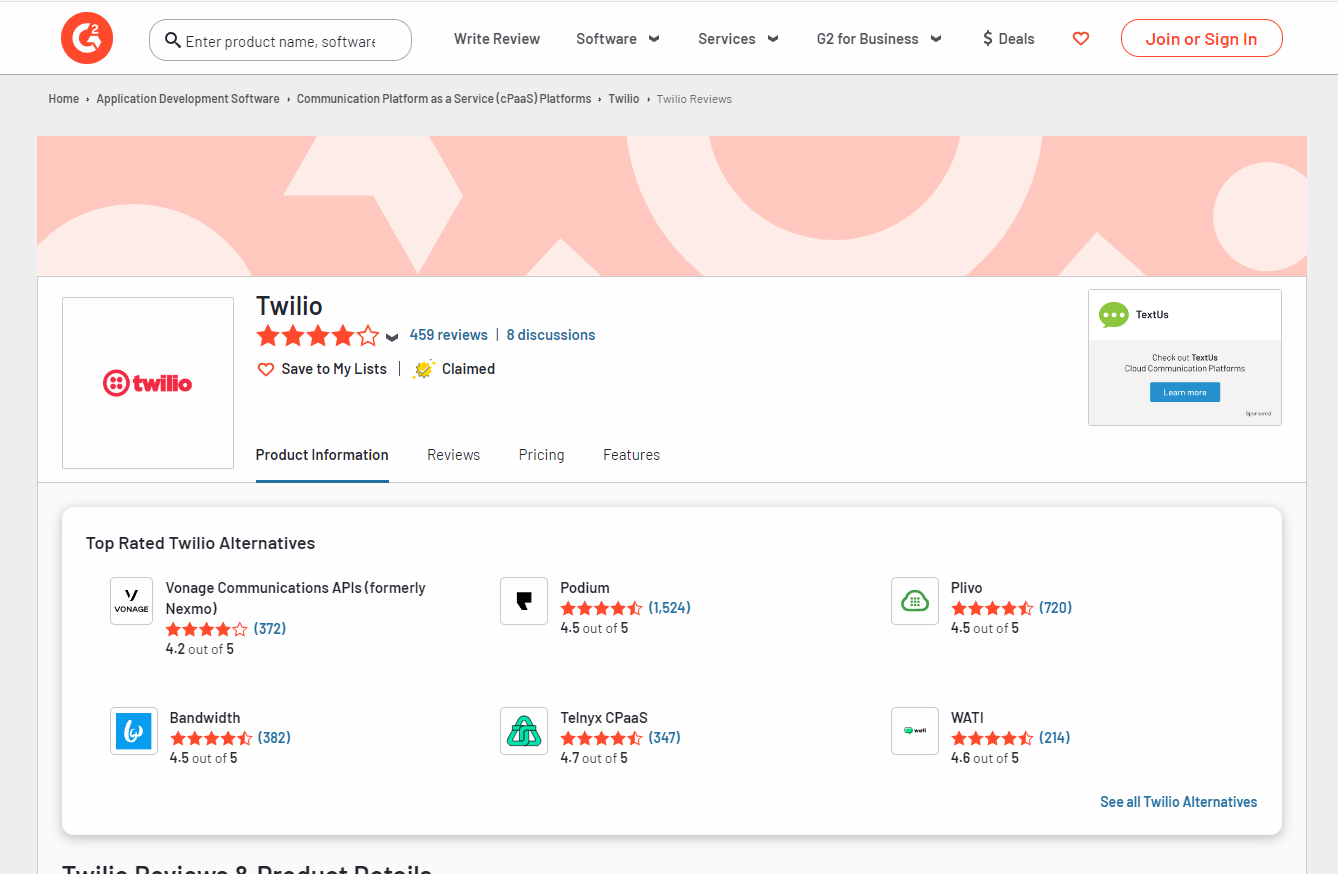
Verified G2 reviewers celebrating Twilio Segment highlight their exemplary data organization and reliability fueling meaningful integrations. Many enterprise ads praise their solid data pipelines, cloud scale, and ability to unlock custom use cases through a blockchain-like certainty across once-fragmented systems.
Users do cite the learning curve for initial setup as a drawback requiring developer orientation to customize taxonomy and mappings. Some SMBs have found the product overengineered for their use case. Yet most agree Segment delivers accuracy and trustability of data flows that in turn power revenue growth.
Winner: Klaviyo
Based on user sentiment and practitioner validation, Klaviyo stands out as the winner according to end-user reception. Their laser focus on excelling at email and SMS marketing based on customer needs earns immense trust through tangible optimization and automation power accessible even to growing teams.
While Twilio Segment’s platform certainly proves revolutionary in data infrastructure across industries, Klaviyo strikes the right chord for core user journeys in owned engagement. Their specialization translates into customer delight.
9. FAQ’s
Klaviyo FAQs
- What types of email campaigns can you execute in Klaviyo?
Klaviyo enables welcome campaigns, behavioral-triggered campaigns, transactional emails, abandoned cart flows, discounts, event reminders, SMS messages, and more. Robust automation empowers timed or event-based communication.
- Does Klaviyo build automated email workflows?
Yes, Klaviyo offers a visual automation builder to create multi-channel campaigns activated by schedules, events, properties, and more. Drag-and-drop customization and templates accelerate.
- Can Klaviyo help track website analytics?
Klaviyo integrates web event tracking to connect online behaviors with email and SMS performance for cross-channel optimization. Site metrics like traffic sources and conversions are measured alongside campaign analytics.
- How does Klaviyo help maximize deliverability?
Proactive tools like list cleaning, per-send previews across mobile devices, global infrastructure, and predictive models boost inbox placement and engagement. Granular performance tracking identifies further optimization opportunities.
Twilio Segment FAQs
- What kind of data does Segment gather?
Segment consolidates customer data from any source including your website, mobile apps, offline databases, and more to create a universal customer profile. 300+ integrations fuel this data centralization.
- How does Segment structure data for other tools?
Custom modeling allows you to map data taxonomies to match destination specifications so tools receive insights in ready-to-activate formats specific to their use case versus standardized reporting.
- Can Segment combine online and offline data effectively?
Yes, Segment proves exceptional at ingesting any first, second, or third-party data source whether digital events, cloud software data, or offline database dumps into fully blended customer records.
- Does Segment offer predictive modeling or analytics?
Segment focuses on reliable data collection and routing not activation – their infrastructure feeds prediction and performance tracking platforms like Google Analytics for interpretation and next-best-action modeling powered by Segment data.
Final Thoughts
Choose Klaviyo if…
With strengths in owned-channel activation through email and SMS aligned to customer data insights, Klaviyo shines best for e-commerce brands focused on campaign execution and conversion rate optimization.
The email marketing platform has purpose-built automation, customizable metrics, and predictive modeling that offer an agile solution for transactional marketers to analyze performance and continually refine high-impact flows and segments driving growth.
You can also read up on some Klaviyo alternatives for a broader view of which email marketing platform is the best fit for you.
Choose Twilio Segment if…
As the leading customer data platform consolidating insights across tools, Twilio Segment’s platform proves revolutionary for technology teams wanting to unify data for enterprise-wide accuracy in reporting and systems coordination. It’s the perfect platform if you want to automate personalized email and SMS communications.
Their infrastructure uniquely empowers creating complex, omnichannel customer experiences by dissolving data silos into reliable profiles powering any app through seamless pipes.
Evaluating your stack and growth objectives helps determine which specialty contributes to the missing pillar whether owned-channel activation or customer truth through steady data. Mix and match solutions as needed or double down on a singular powerhouse.
We urge you to ask any clarifying questions below so our team can help identify the ideal choice to support your goals now and in the future.
